Looking to level up your spooky season, my friends? You’ve come to the right place! I’m Roshan Sharma, your friendly neighborhood Halloween fanatic, and I believe the best kind of magic is the kind you can make yourself. 🎃
Are you tired of the same old Halloween crafts that end up in the recycling bin a day later? It can be a real challenge to find activities that are both festive and genuinely engaging, especially something that sparks real curiosity in kids (and let’s be honest, in us adults, too!). ✨
That’s why I put together this list! We’re diving into the world of Halloween STEM, where we combine the thrill of ghosts and goblins with the wonder of science and technology. Get ready for a season of bubbling potions, launching ghosts, and haunted circuits that make learning an unforgettable adventure! 🧪
Our Top 3 Spooky Picks
- Most Creative Idea: Exploding Pumpkin Volcano
- Easiest to Set Up: Glow-in-the-Dark Slime
- Best for Families: Build a Monster Marble Run
Creepy Chemistry & Gooey Science Adventures
1. Exploding Pumpkin Volcano 🌋
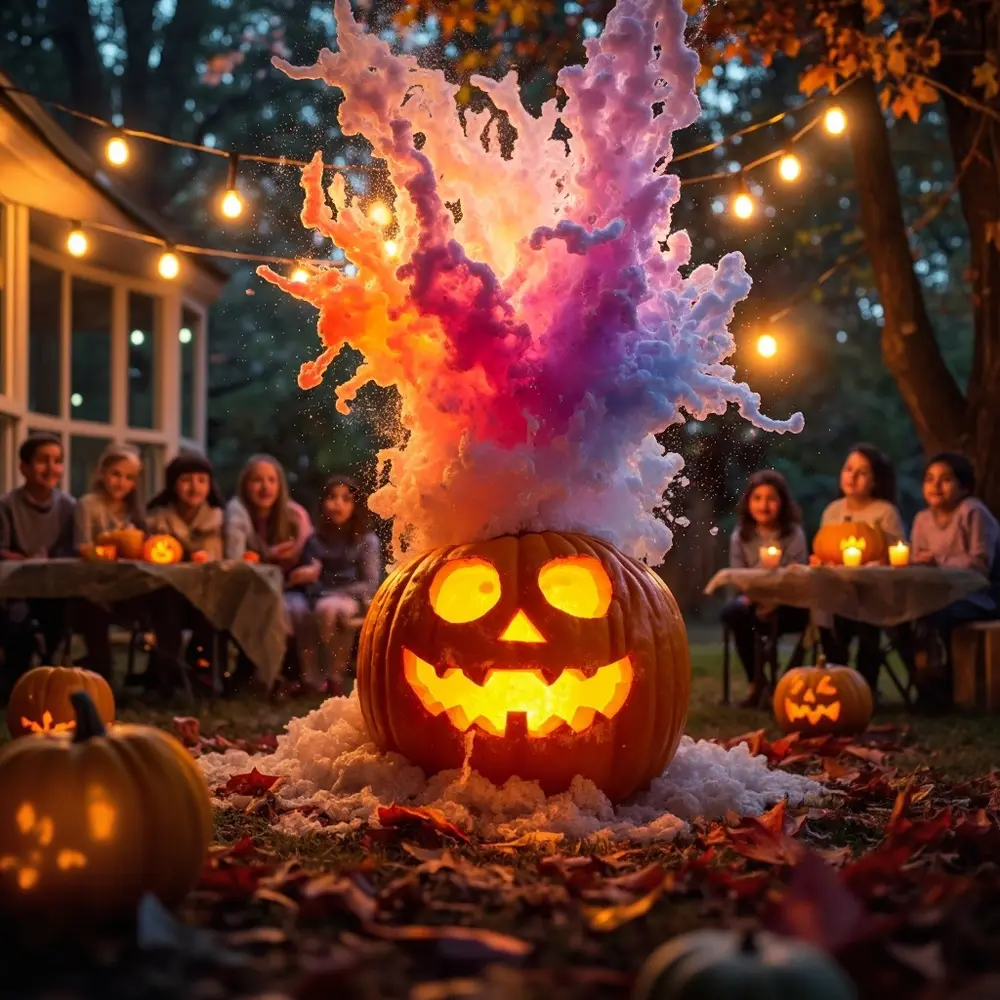
I absolutely love this one for the pure “wow” factor! This classic baking soda and vinegar reaction turns your jack-o’-lantern into a fizzing, erupting volcano of colorful foam. My cousins still talk about the time we made a giant one in the backyard.
- Best For: Kids aged 4-10, Home science fun, Visually impressive.
Image-1: A bright orange pumpkin erupting with a colorful, foamy “lava” on a protected surface, with excited children watching.
2. Glow-in-the-Dark Slime ✨
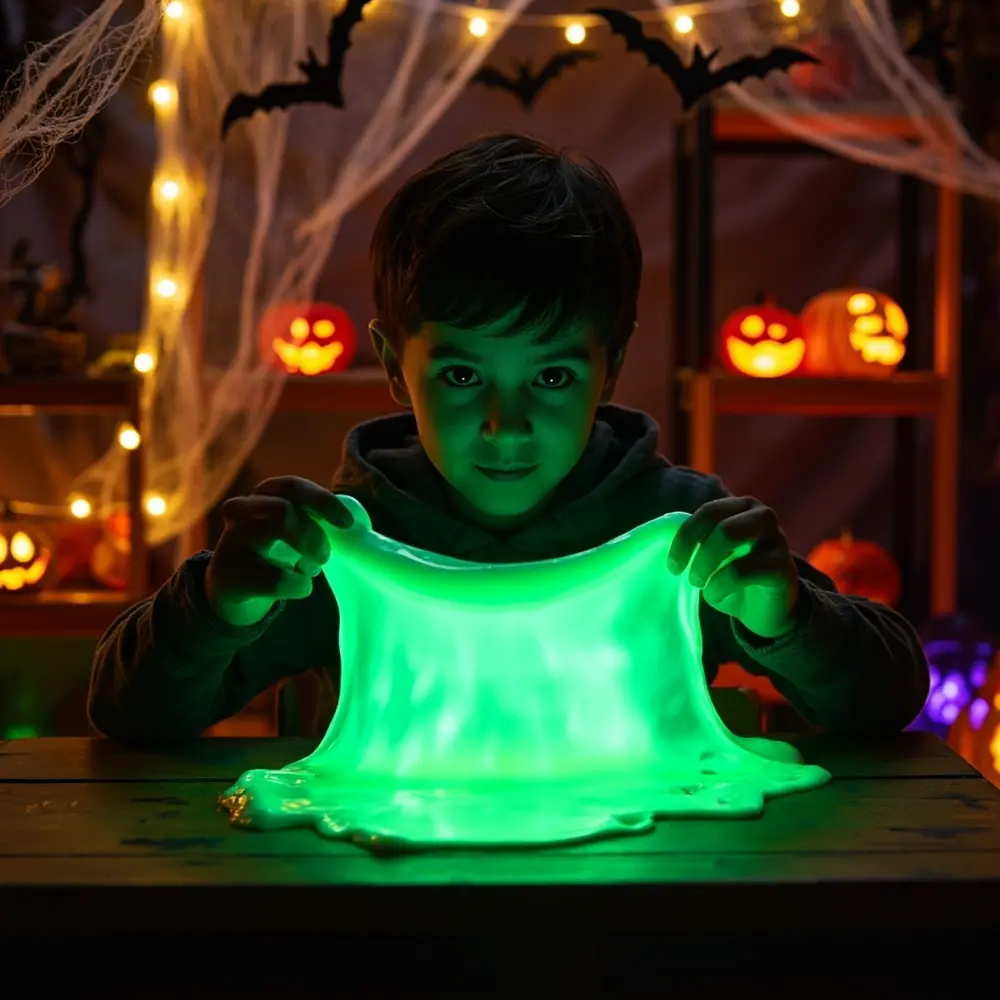
There’s something so magical about making something that glows. This project is a sensory superstar, creating a stretchy, gooey slime that comes to life when you turn out the lights. It’s super easy and a huge hit at sleepovers.
- Best For: Kids aged 3-8, Sensory exploration, Easy and low-cost.
Image-2: Hands stretching luminous green slime in a darkened room, emphasizing the glow effect.
3. Oobleck Monster Guts 🧠

This is where science gets wonderfully weird! You’ll make a non-Newtonian fluid—oobleck—that acts like a solid when you press it and a liquid when you let it flow. We always add green and red food coloring to make it look like monster guts, which gets the best reactions.
- Best For: Kids aged 5-12, Tactile learning, Understanding fluid dynamics.
Image-3: A bowl of thick, greenish-red oobleck being poured, showing its unique flow, perhaps with a toy spider peaking out.
4. Dancing Ghost Experiment 👻
Looking for a quick and mesmerizing experiment? This is it! By dropping little paper ghosts into a glass of carbonated water, you can watch them magically dance up and down. It’s a fantastic way to show how gas bubbles create buoyancy in just a few minutes.
- Best For: Kids aged 4-9, Quick and simple, Demonstrates buoyancy.
Image-4: A clear glass of sparkling water with small, white ghost cutouts floating up and down.
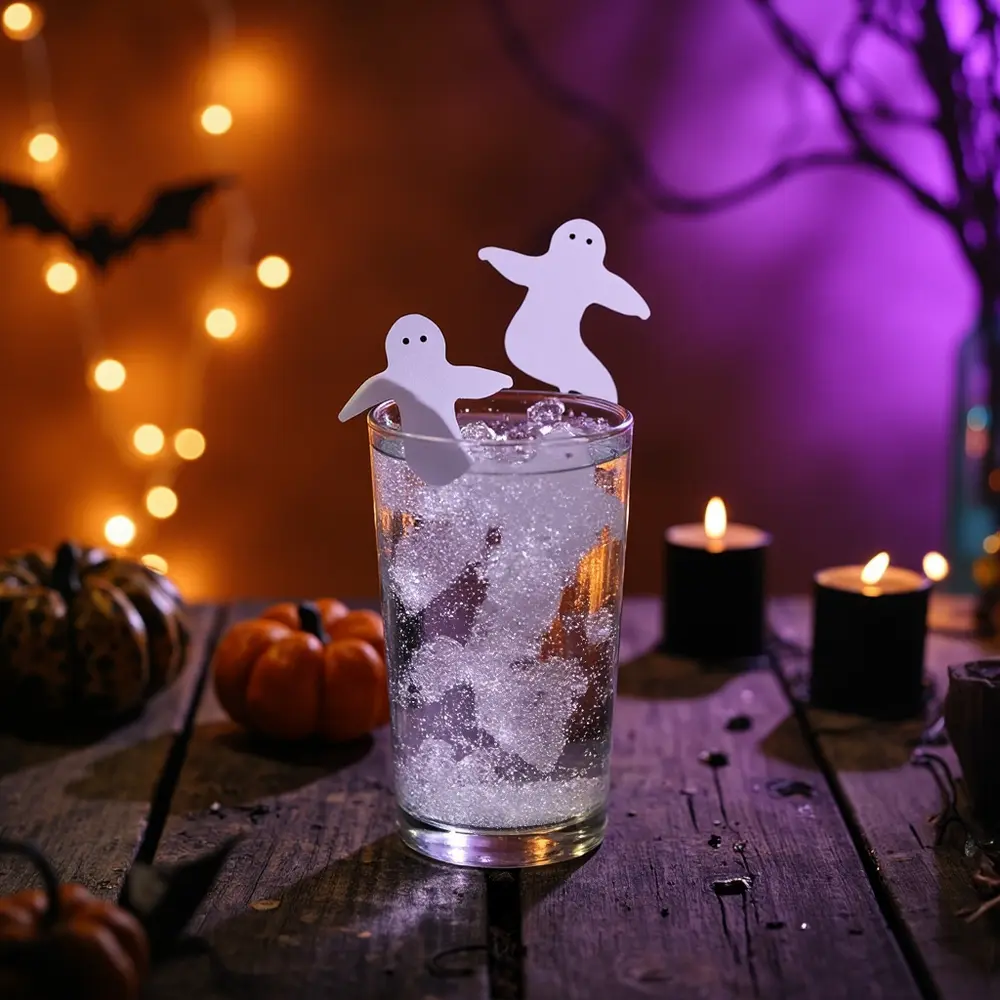
5. Vampire Blood Density Tower 🧛
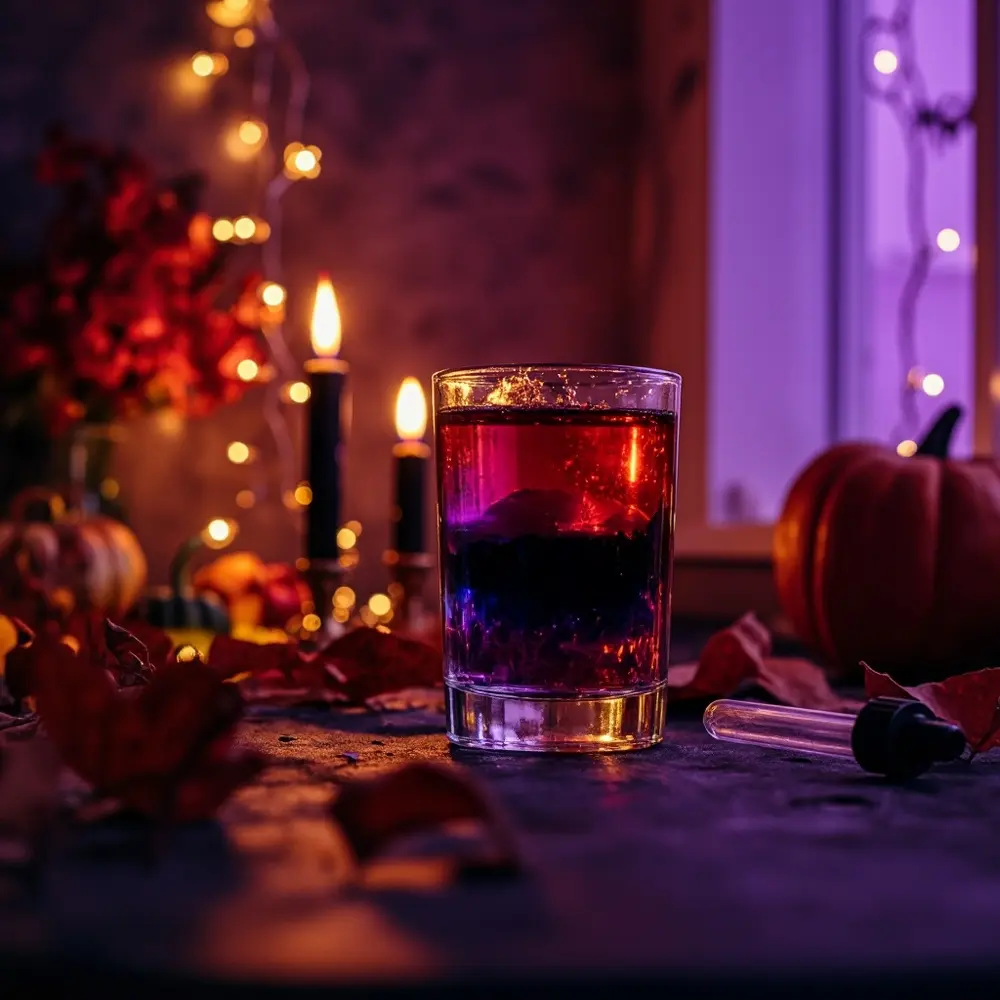
This project looks like something straight out of a mad scientist’s lab, but it’s a brilliant lesson in liquid density. You carefully layer different liquids like oil, water, and corn syrup (all colored red, of course) to create a spooky, stratified tower. It’s a real showstopper on the science shelf!
- Best For: Kids aged 8+, Visual learning, Exploring density concepts.
Image-5: A tall, clear glass showing distinct layers of red, purple, and black liquids, with a pipette nearby.
6. Dry Ice Bubbling Potions cauldron

For a truly theatrical effect, nothing beats dry ice. With very careful adult supervision, you can create the ultimate bubbling cauldron that emits thick, eerie fog. I use this trick for my annual Halloween party entrance, and it never fails to impress.
- Best For: Kids aged 8+ (with adult supervision), Dramatic effect, Exploring sublimation.
Image-6: A cauldron or beaker emitting thick, eerie fog, perhaps with glowing liquid inside, in a dimly lit setting.
Spooky Engineering & Design Challenges
7. Build a Monster Marble Run 🕸️
Unleash your inner engineer with this awesome challenge! Using cardboard tubes, boxes, and other recyclables, your family can design a wild, monster-themed marble run. It’s a fantastic way to experiment with gravity, angles, and momentum.
- Best For: Kids aged 7-14, Problem-solving, Creative design.
Image-7: An elaborate, multi-level marble run made from cardboard tubes and boxes, decorated with monster eyes and spiderwebs, with a marble mid-descent.
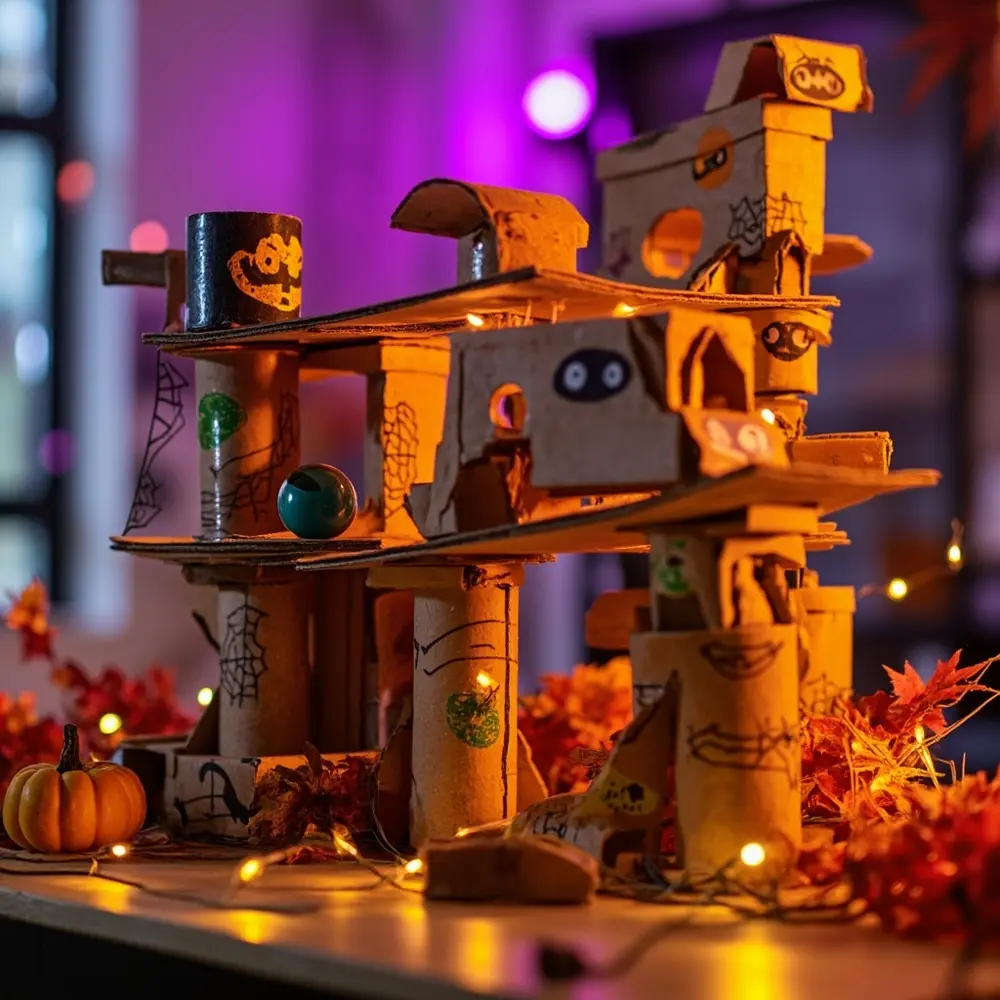
8. Pumpkin Catapult Challenge 🎃
Ready, aim, fire! Building mini catapults from craft sticks or LEGOs to launch candy pumpkins is a blast. We always turn this into a friendly competition in the backyard to see who can launch their candy the farthest. It’s a super fun introduction to levers and physics.
- Best For: Kids aged 6-12, Introduction to physics, Outdoor fun.
Image-8: A small wooden or craft-stick catapult launching a miniature pumpkin, mid-air against a blurred background.
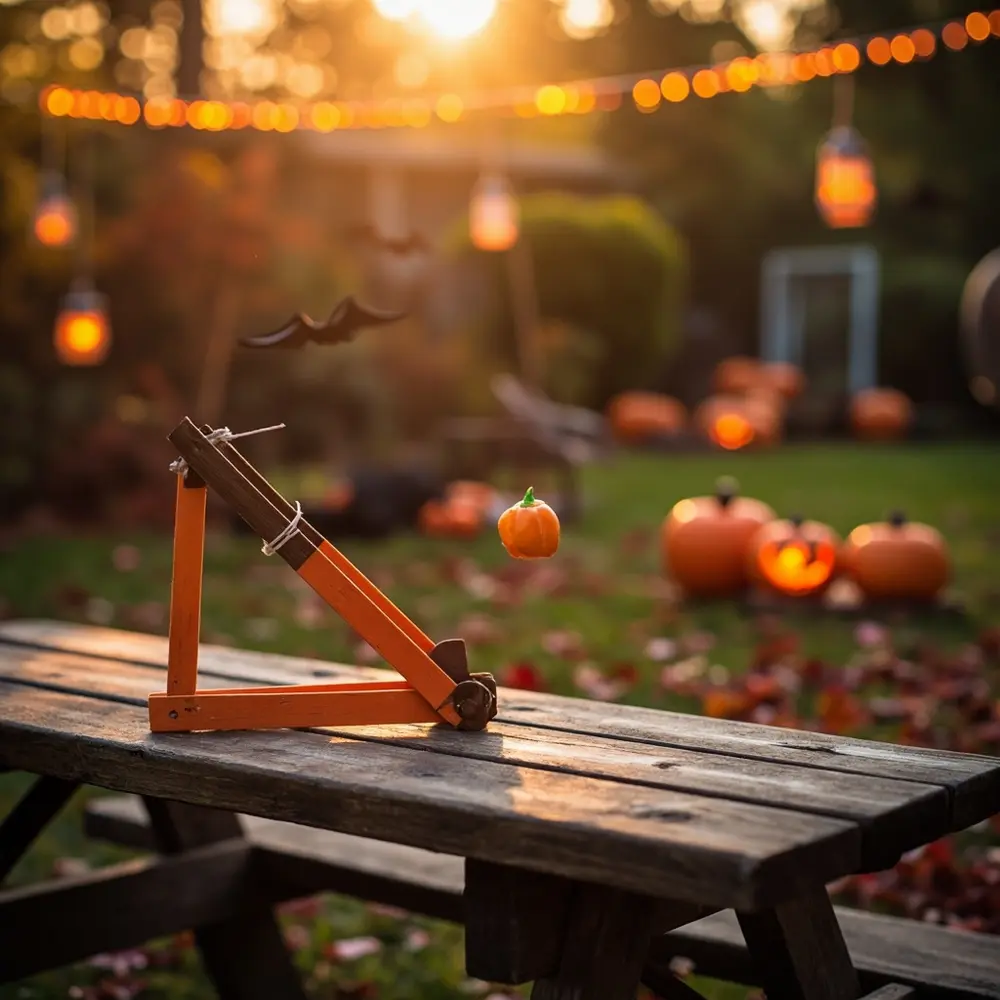
9. Spiderweb Geometry Art 🕷️
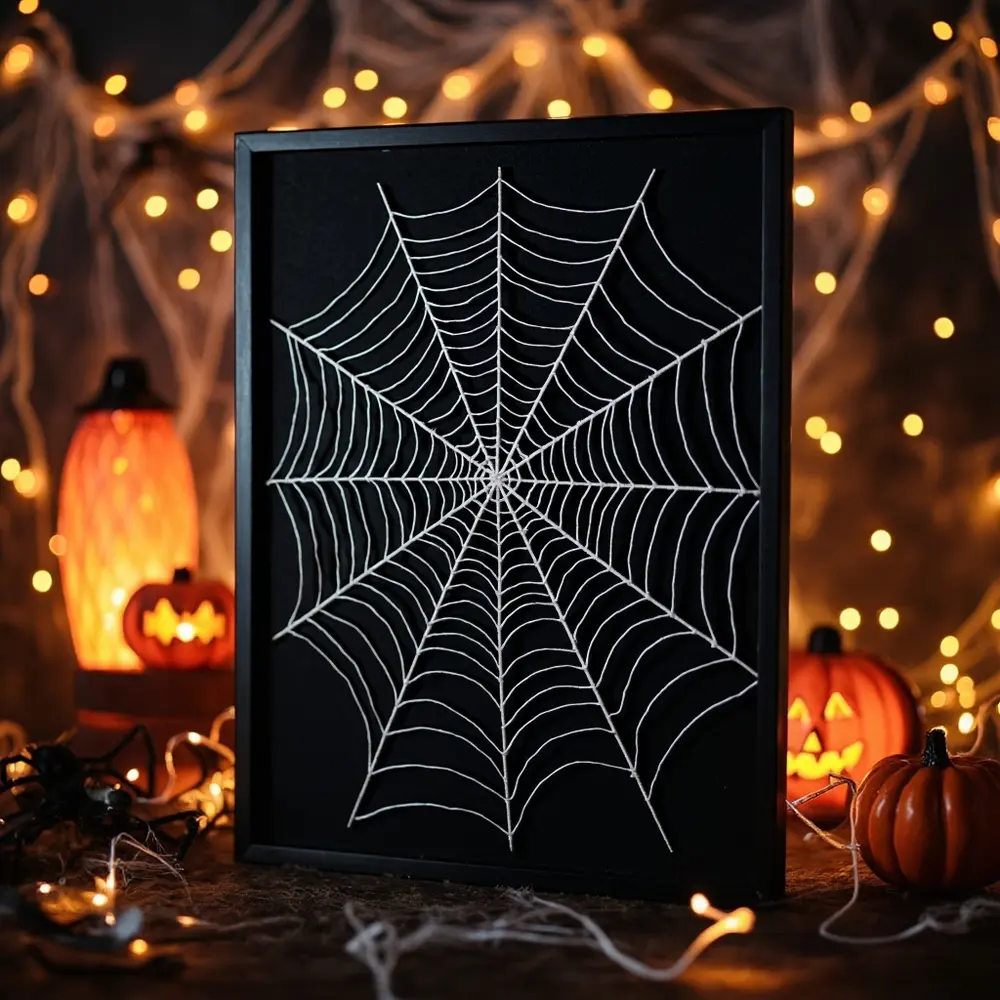
This project beautifully merges math and art. By stretching string between pins on a corkboard or cardboard, kids can create intricate spiderweb designs. It’s a quiet, focused activity that reinforces geometric shapes and patterns in a cool, creepy way.
- Best For: Kids aged 7+, Art & Math integration, Fine motor skills.
Image-9: A close-up of a beautifully intricate spiderweb made from white string on a dark background, showcasing geometric patterns.
10. Frankenstein’s Monster Hand Grabber 🤖
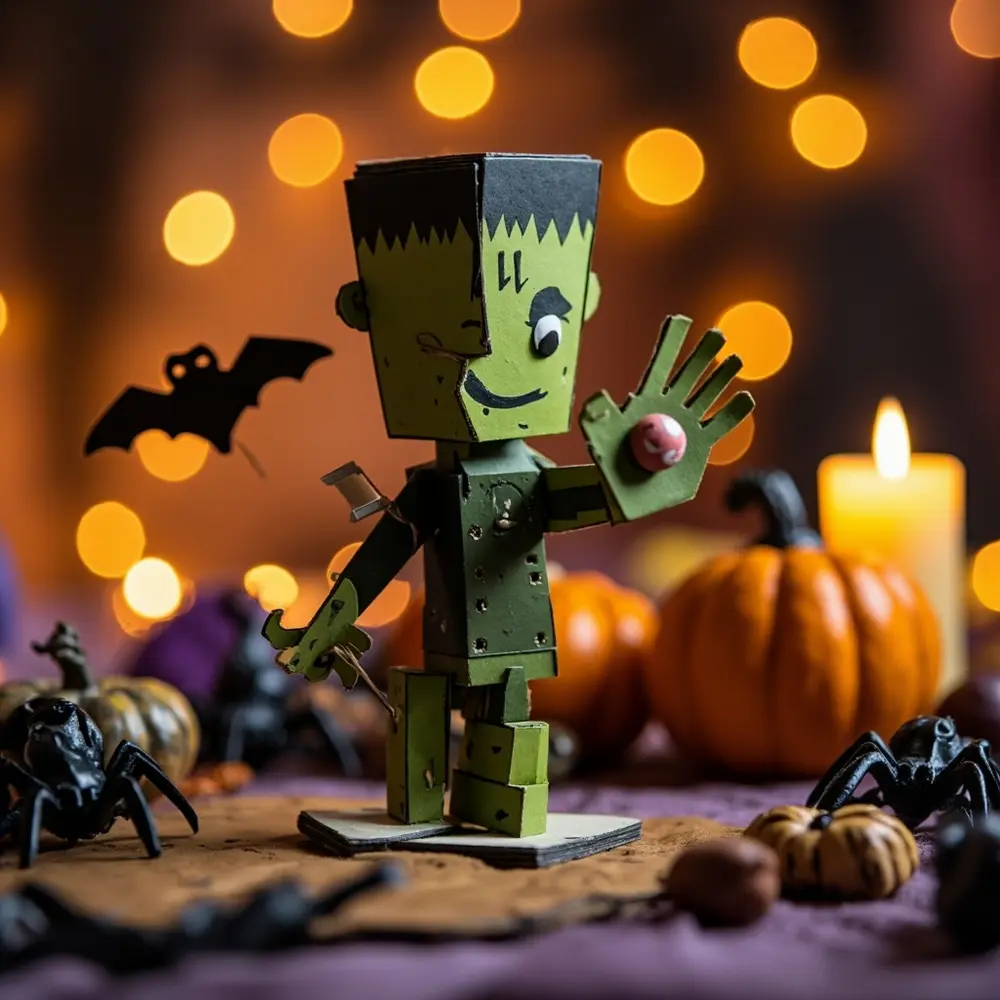
Build a working robotic hand! This project uses simple materials like cardboard, straws, and string to create a grabber that mimics how tendons work. My niece gave this one a big thumbs-up after she used it to sneak candy from across the table.
- Best For: Kids aged 9-15, Basic robotics, Understanding levers and pulleys.
Image-10: A cardboard monster hand grabber holding a small Halloween candy, showing the string mechanism.
11. DIY Haunted House Circuit 💡
Bring a miniature haunted house to life with the magic of simple circuits. Using copper tape, a small battery, and LEDs, you can make windows glow or spooky eyes light up. It’s an amazing first step into the world of electronics and feels so rewarding when it works.
- Best For: Kids aged 8-13, Basic electronics, Creative building.
Image-11: A small, paper haunted house model with tiny LED lights glowing in the windows or as spooky eyes.
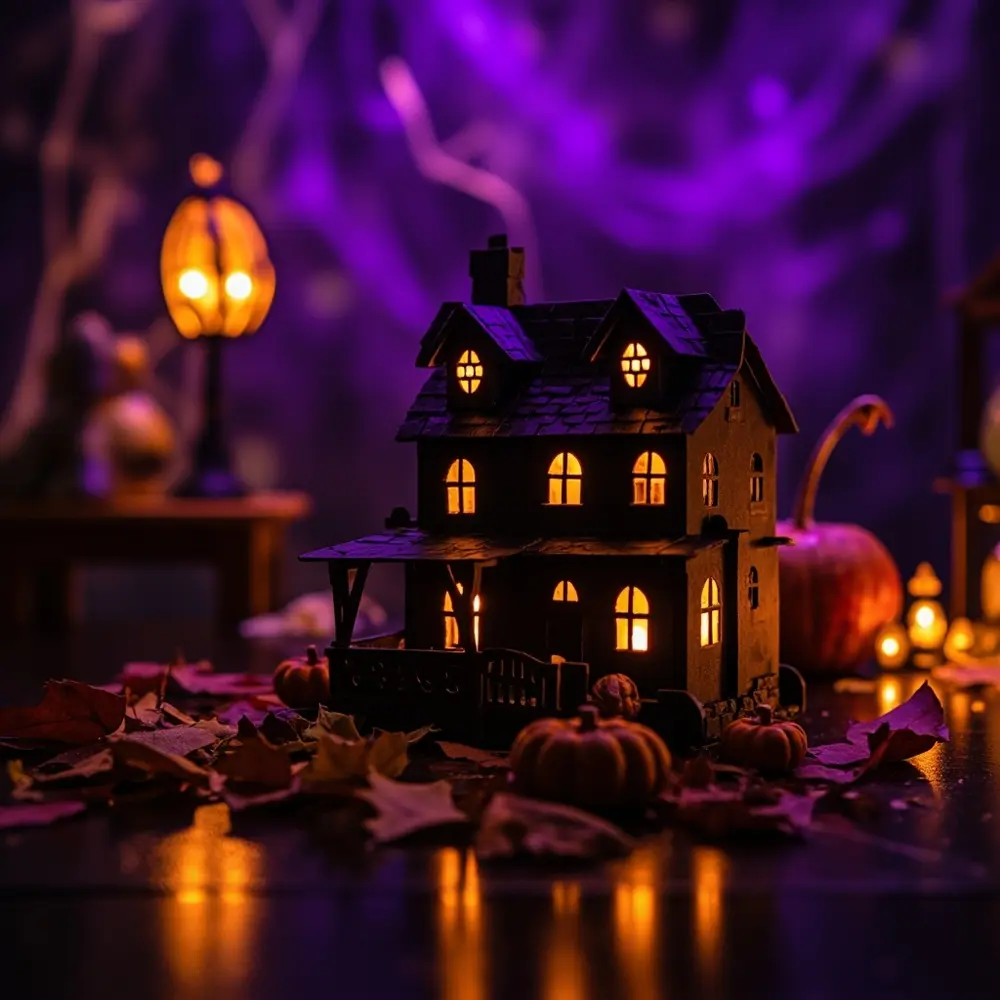
12. Candy Corn Bridge Building 🍬
Can you build a bridge out of candy? This sweet challenge tasks kids with using candy corn and toothpicks to design a bridge strong enough to hold weight. It’s a delicious way to learn about structural shapes like triangles and trusses.
- Best For: Kids aged 6-12, Structural integrity, Engineering challenges.
Image-12: A small, sturdy bridge made entirely of candy corn and toothpicks, perhaps with a small toy car on top.
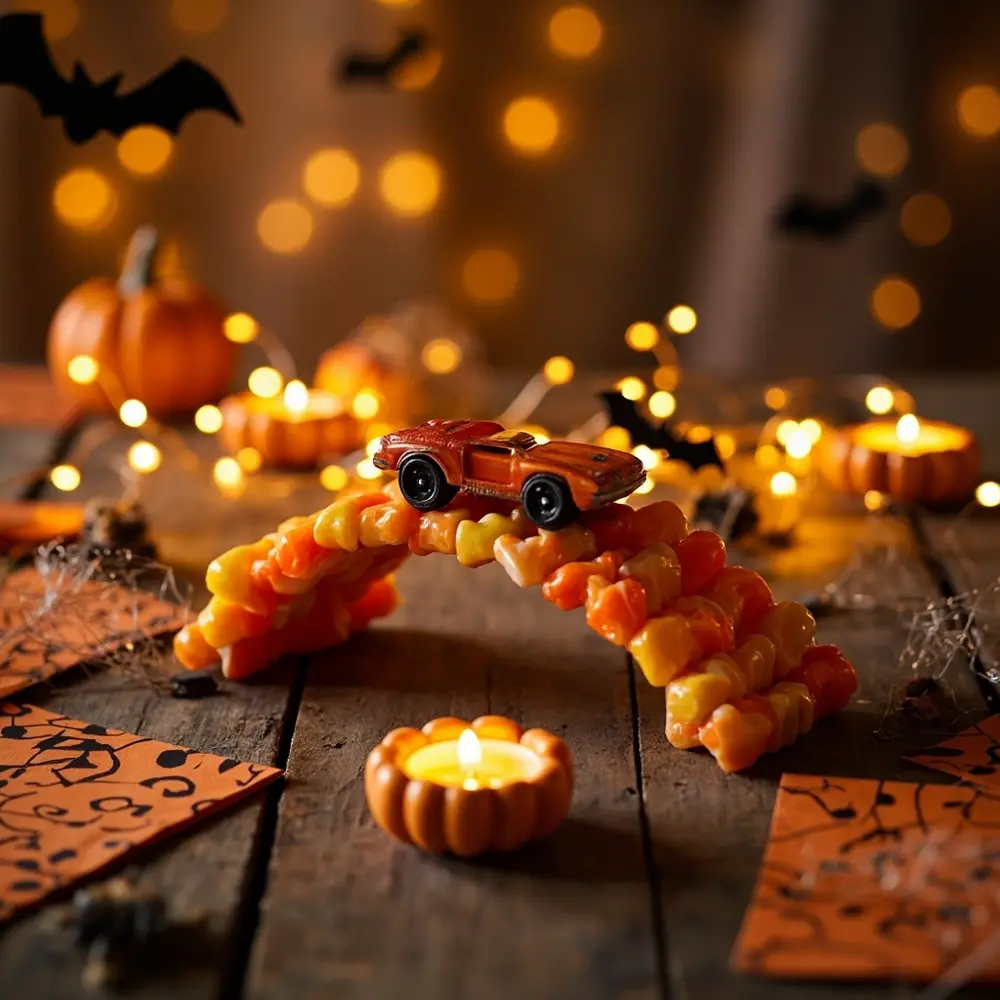
13. Flying Ghost Rockets 🚀
3… 2… 1… Liftoff! These little ghost rockets are powered by a simple Alka-Seltzer and water reaction inside a film canister. The “pop” and launch are so satisfying, and kids love decorating their ghosts before sending them flying.
- Best For: Kids aged 5-10, Exploring propulsion, Outdoor science.
Image-13: A small, white ghost rocket launching into the air from a film canister, with fizzing bubbles visible.
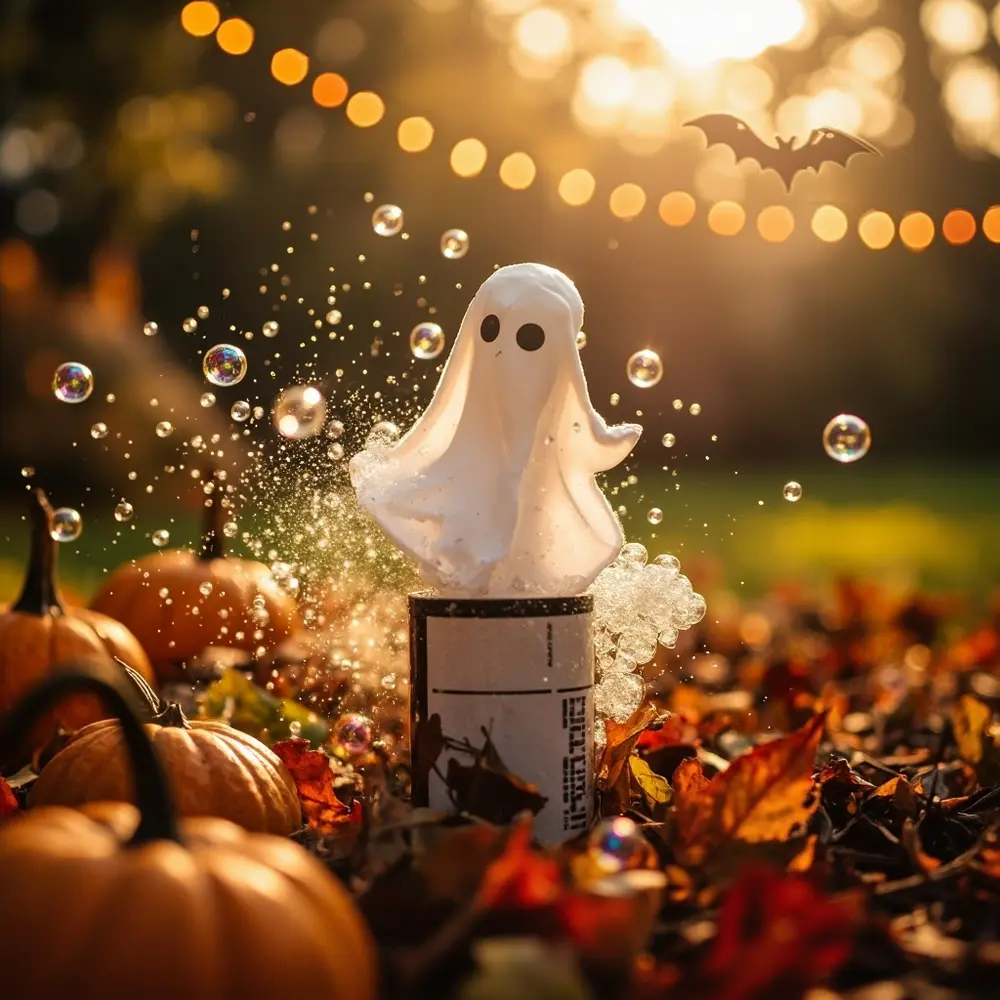
Haunted Tech & Math Mysteries
14. Spooky Secret Code Deciphering 📜
Every good mystery needs a secret code! I love creating spooky messages for kids to decipher using simple ciphers. It’s a great way to introduce the basics of cryptography and makes them feel like little detectives on a mission.
- Best For: Kids aged 7-12, Logic and pattern recognition, Introduction to cryptography.
Image-14: A notepad with a spooky-themed secret code being deciphered, with a pencil and an alphabet key nearby.
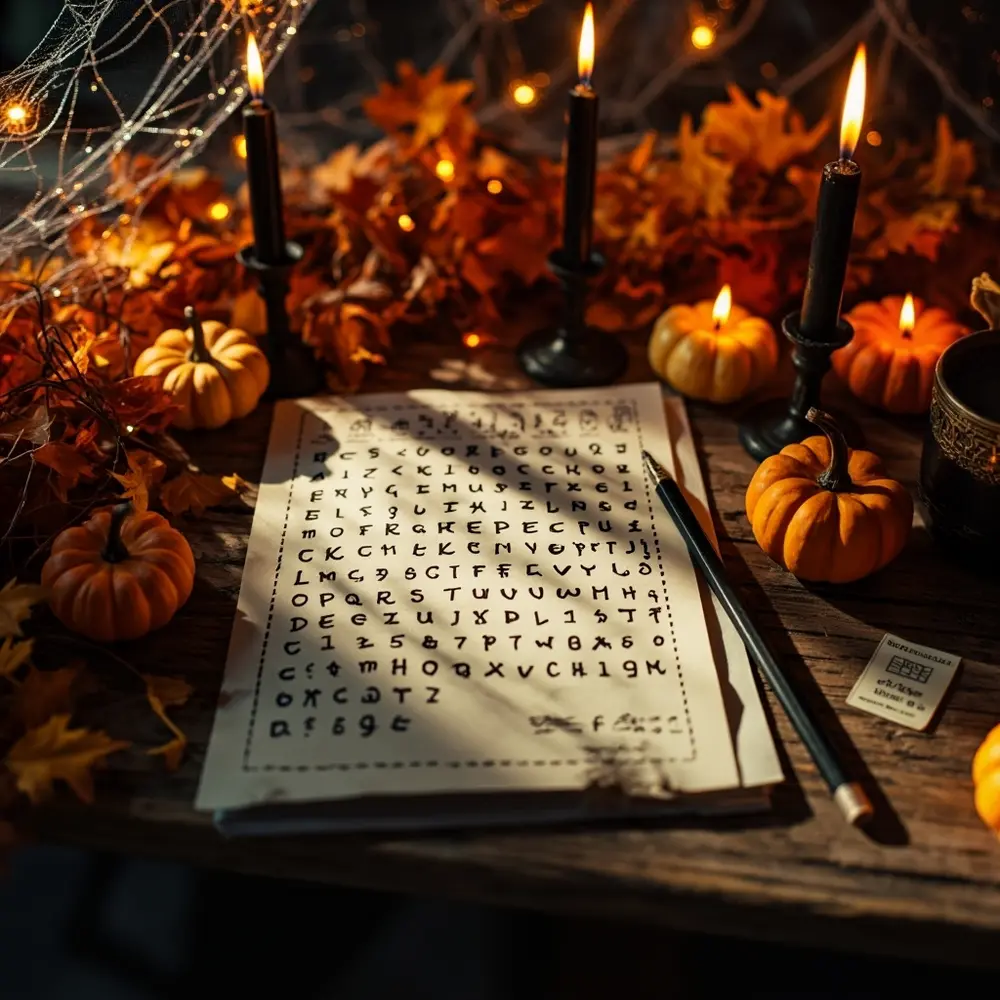
15. Pixel Art Monster Design 👾
Connect creativity with coordinate planes! Using grid paper or a simple spreadsheet, kids can design their own pixelated monsters. This is a fantastic, low-pressure introduction to the concepts behind digital imaging and how computers create pictures.
- Best For: Kids aged 6-11, Introduction to digital imaging, Grid coordinates.
Image-15: A colorful pixel art monster design on grid paper or a tablet screen, showing the individual squares.
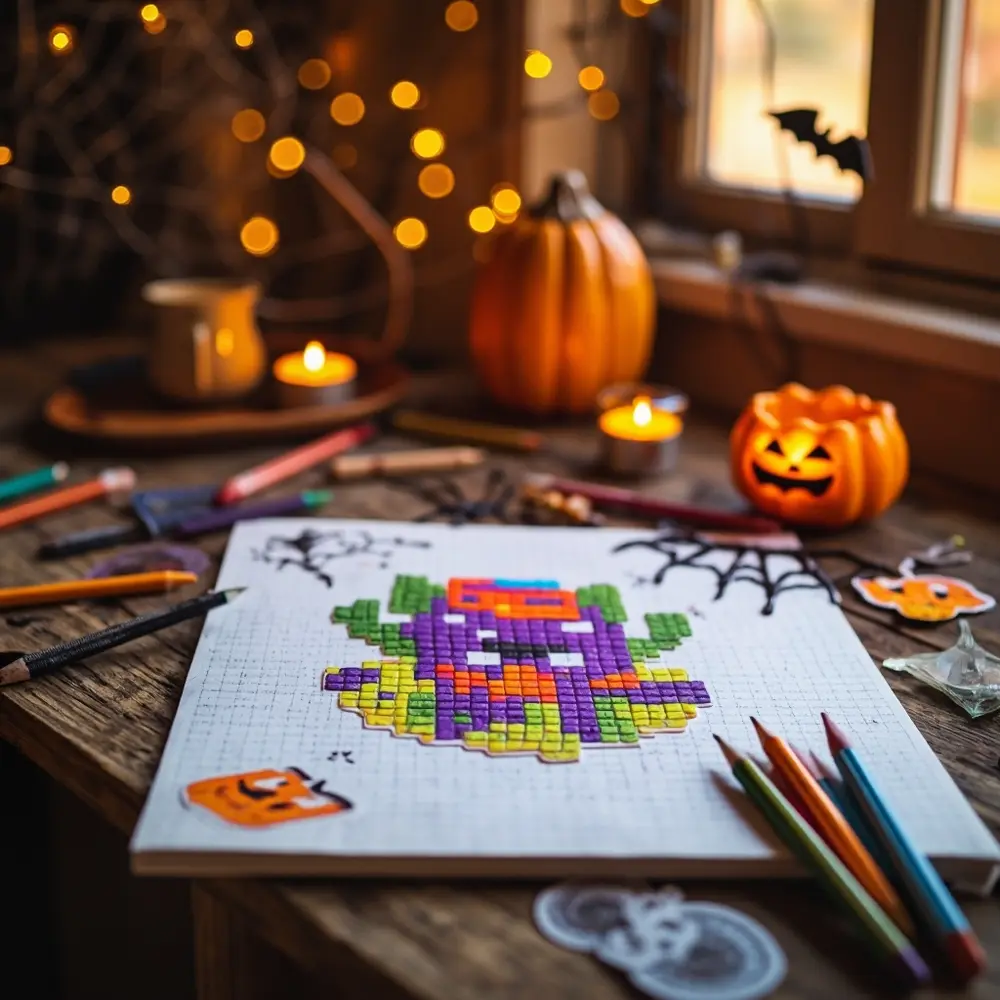
16. Monster Math Measurement Scavenger Hunt 📏
Get kids up and moving with this fun math game. Create a scavenger hunt where they have to measure Halloween items around the house using silly units, like “How many spider legs long is the couch?” It makes learning about measurement a playful adventure.
- Best For: Kids aged 4-8, Practical math, Measurement concepts.
Image-16: A child measuring a pumpkin with a string of paper bat cutouts, laughing playfully.
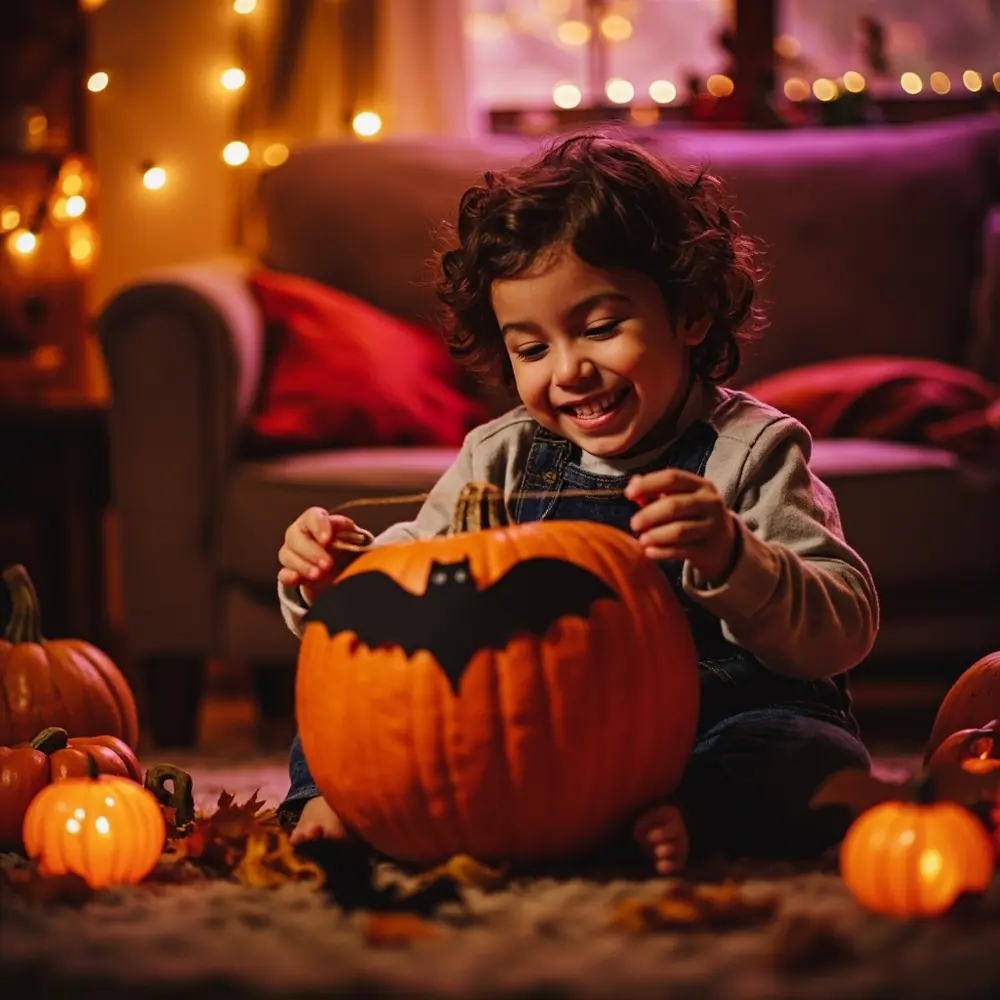
17. Stop-Motion Halloween Animation 🎬
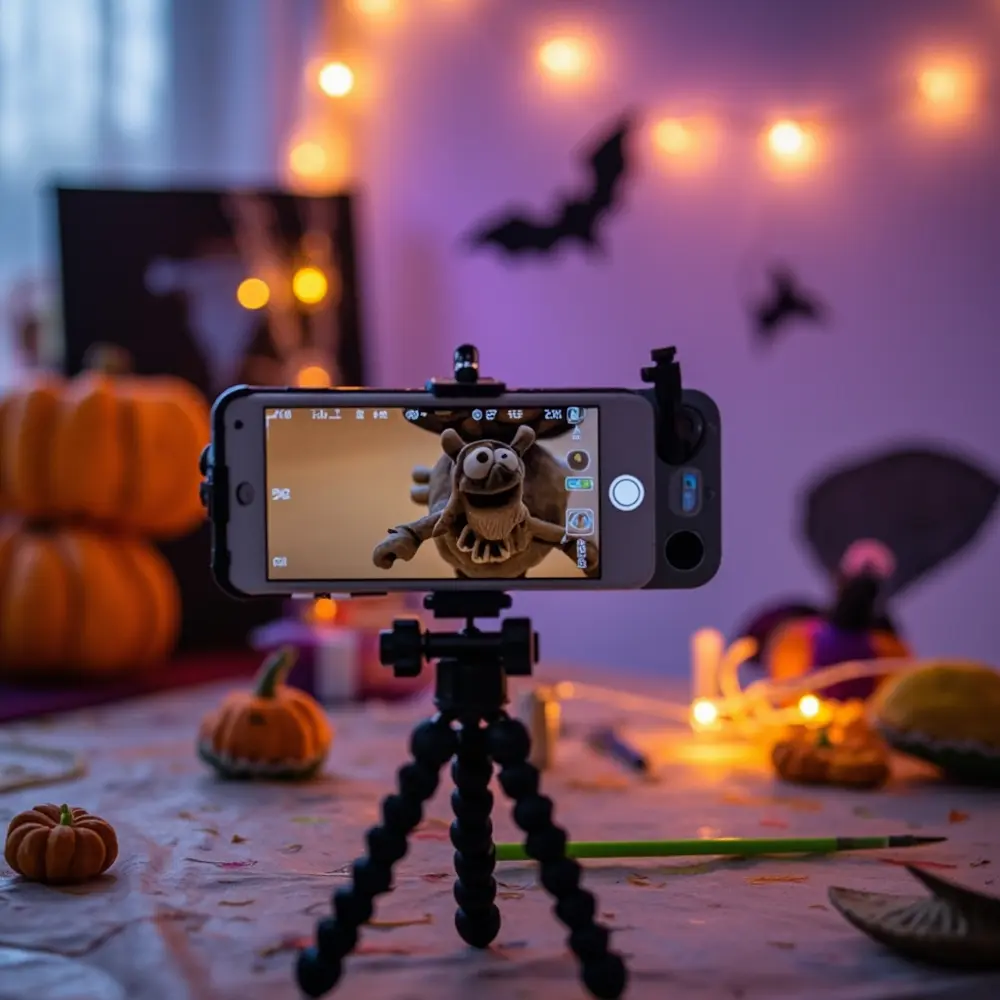
Bring your Halloween toys to life! Using a smartphone and a free stop-motion app, kids can create their own short, spooky films. It’s an incredible project for teaching patience, sequencing, and creative storytelling through technology.
- Best For: Kids aged 10+, Creative storytelling, Introduction to animation tech.
Image-17: A phone or tablet set up with a tripod, capturing frames of a clay monster moving slightly for stop-motion.
18. Binary Code Halloween Bracelets 💻
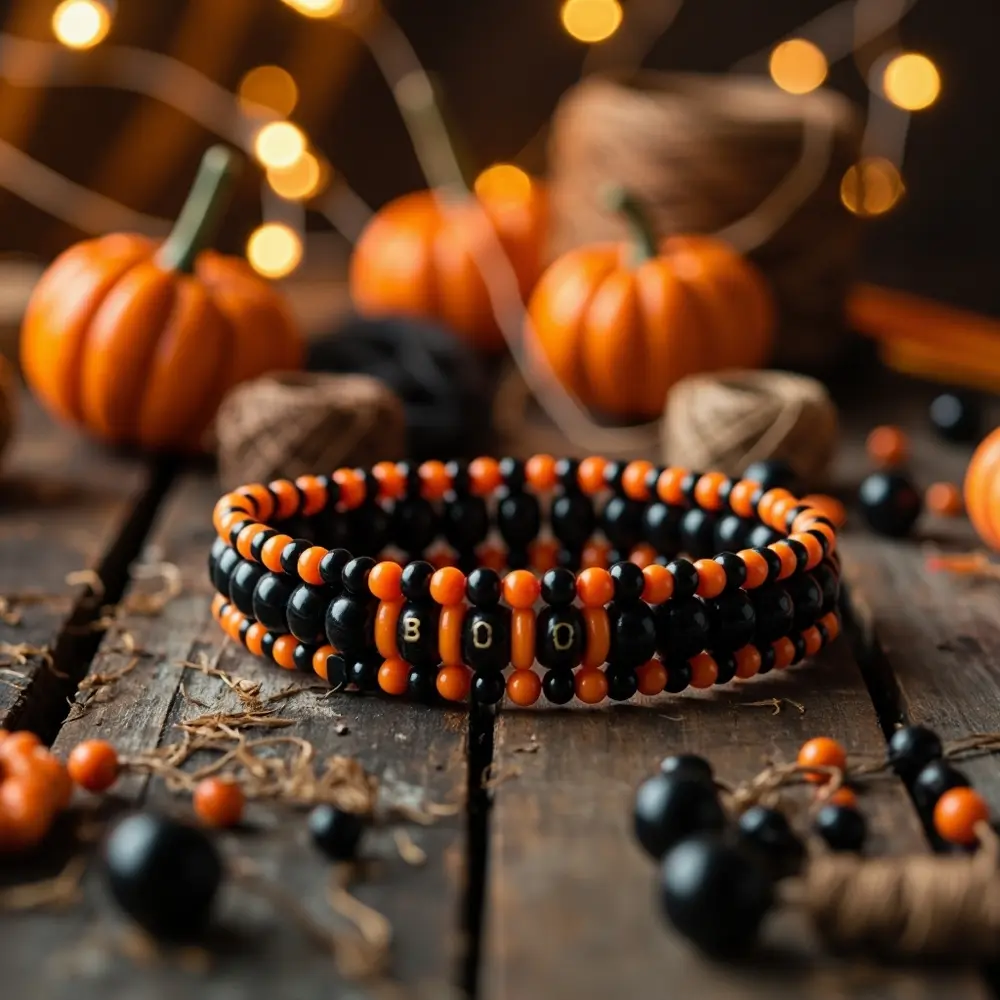
This is tech you can wear! Kids can learn the basics of binary code by creating bracelets where two different colored beads represent the 0s and 1s. They can spell out spooky words like “BOO” or their own names in this secret computer language.
- Best For: Kids aged 8+, Introduction to binary, Pattern recognition.
Image-18: A close-up of a bracelet made of two different colored beads, showing a pattern that spells “BOO” in binary.
19. DIY Ghost Projector 🔦
Explore the science of light and shadow with this simple but effective project. By making a small cutout and using a flashlight, you can project ghostly shapes onto a dark wall. We always turn this into a spooky shadow puppet show before bedtime.
- Best For: Kids aged 6-12, Understanding light, Creative shadow play.
Image-19: A darkened room with a simple DIY projector casting a ghostly shadow figure onto a wall.
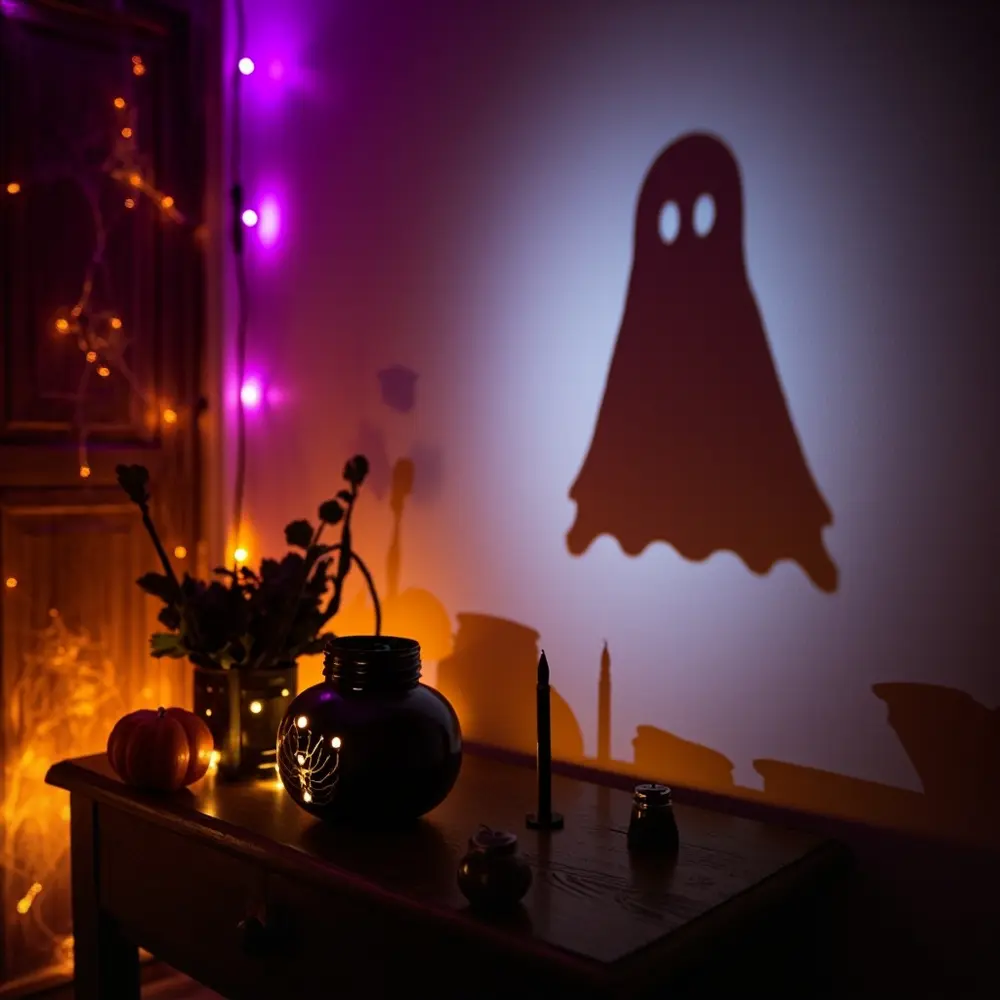
20. Halloween Data Collection & Graphing (Candy Sort) 📊
What do you do with all that trick-or-treating candy? Turn it into a math lesson! Sorting the candy by type or color and creating a bar graph is a fun, visual way to introduce data analysis and basic statistics. I call it the science of sugar.
- Best For: Kids aged 5-10, Basic statistics, Data representation.
Image-20: A pile of assorted Halloween candies being sorted into different piles, with a simple bar graph drawn on paper beside them.

How to Choose the Right Halloween STEM Project for Your Crew
With so many fun ideas, how do you pick the perfect one? I always consider a few key things before diving in. Thinking through these will help you choose a project that’s a treat, not a trick!
Age and Complexity Level
Consider your audience! Projects like Glow-in-the-Dark Slime are great for toddlers, while older kids and teens will love the challenge of a DIY Haunted House Circuit or Stop-Motion Animation. Don’t be afraid to let adults join in—the Pumpkin Catapult is fun for everyone!
Messiness and Supervision Required
Let’s be real: some science is messy! An Exploding Pumpkin Volcano is an outdoor-only activity for me. Slime and oobleck need a covered surface. Projects involving dry ice or Alka-Seltzer rockets always require close adult supervision.
Budget and Available Materials
The best projects often use what you already have. Many of these ideas, like the Monster Marble Run or Monster Hand Grabber, rely on recycled cardboard. Others might need a few special items, like LEDs or glow powder, but are still very budget-friendly.
Indoor vs. Outdoor Space Considerations
Think about your space. Flying Ghost Rockets and Pumpkin Catapults are perfect for getting some fresh air in the backyard. Quieter activities like Spiderweb Geometry Art or Spooky Secret Code Deciphering are ideal for a cozy, rainy afternoon inside.
Halloween STEM FAQs
Q1: What are some safe ways to incorporate chemistry into Halloween projects for young kids?
Absolutely! Stick to safe, kitchen-based chemistry. The classic reaction between baking soda and vinegar (like in the pumpkin volcano) is perfect. You can also explore density with oil and water or dissolve candy in different liquids to see what happens.
Q2: How can I adapt these projects for a classroom or group setting?
Great question! For a group, I recommend setting up “stations.” Each station can have a different activity, and kids can rotate through them. For bigger projects like the marble run, divide kids into teams to encourage collaboration.
Q3: What are some common household items I can use for most STEM projects?
You probably have a STEM lab in your house already! I always keep a stash of cardboard boxes, toilet paper tubes, plastic bottles, string, tape, food coloring, baking soda, and vinegar. These simple items are the building blocks for countless amazing projects.
Q4: How do I make these projects truly “mind-blowing” and keep kids engaged?
The secret is in the presentation! Frame it as an exciting experiment, not a lesson. Wear a lab coat or silly goggles. Most importantly, let the kids lead the discovery. Ask questions like, “What do you think will happen if we add more?” to encourage them to think like real scientists.
Your Spooky STEM Adventure Awaits!
There you have it—20 projects to transform your Halloween into a festival of discovery. I truly believe that combining spooky fun with hands-on learning creates the most lasting memories. Forget boring crafts; it’s time to make something that fizzes, flies, and lights up the night. I drink way too much pumpkin spice coffee in October, but fueling these projects makes it all worth it!
So pick an idea, gather your materials, and unleash your inner mad scientist. You’ll be amazed at what you and your little monsters can create together.
Which one of these ideas are you dying to try first? Let me know in the comments below

Absolutely! What STEM class project would you like to create?”
Hello!
These ideas are great and I would love to try some in my STEM class for OCTOBER. Can you please direct me to where I can find the directions for them? Thank you!
Absolutely! What STEM class project would you like to create?” i will guide you.